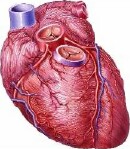
MONDAY, March 31, 2014 (HealthDay News) — Stem cells injected directly into heart muscle can help patients suffering from severe heart failure by improving an ailing heart’s ability to pump blood, a new Danish trial indicates.
Doctors drew stem cells from patients’ own bone marrow, and then injected those cells into portions of the heart where scar tissue seemed to interfere with heart function, explained lead researcher Dr. Anders Bruun Mathiasen. He is a research fellow in the Cardiac Catheterization Lab at Rigshospitalet University Hospital Copenhagen.
Within six months of treatment, patients who received stem cell injections had improved heart pumping function compared to patients receiving a placebo, according to findings that were to be presented Monday at the American Academy of Cardiology’s annual meeting in Washington, D.C.
“We know these stem cells can initiate the growth of new blood vessels and heart muscle tissue,” Mathiasen said. “That’s what we think has happened.”
If larger follow-up trials prove the treatment’s effectiveness, it could provide hope for people suffering from untreatable heart failure.
“Heart failure is one of the biggest causes of death. If you can save lives or improve their symptoms, then a treatment like this would be extremely beneficial,” said Dr. Cindy Grines, a cardiologist with the Detroit Medical Center and a spokeswoman for the American College of Cardiology.
The treatment could delay the need for a heart transplant and extend the lives of people who can’t qualify for a transplant, Grines added.
This new clinical trial included 59 patients with severe heart failure who were considered untreatable. It is the largest randomized trial to test the potential of stem cell injections in treating heart disease, the researchers said.
In the trial, 39 patients received injections of stem cells into their heart muscle through a catheter inserted in the groin. The procedure required only local anesthesia, Mathiasen said. The other 20 received saline injections.
Doctors first mapped the patient’s heart using a sensor sent through the catheter that tracks both heart movement and voltage conducted by heart tissue.
“The combination of those two can give you a feeling of what is the normal heart tissue and what is the scarred tissue,” Mathiasen said.
Then the researchers ran a needle up the catheter and made 12 to 15 small injections around the area of the scar tissue, he said.
“They injected around the border zones between the living and the dead heart muscle, trying to extend the amount of living heart muscle and reduce the scarring that is there,” Grines explained.
Stem cell patients experienced an 8.2-milliliter decrease in end systolic volume, which indicates the lowest volume of blood in the heart during the pumping cycle and is a key measure of the heart’s ability to pump effectively. The placebo group showed an increase of 6 milliliters in end systolic volume.
The patients who received stem cells also experienced a reduction in their heart’s scar tissue compared to the placebo group, but the amount of reduction did not prove statistically significant, the researchers said.
Researchers plan a larger clinical trial involving 120 to 180 patients in several European countries, Mathiasen said. There are no U.S. trials under way for this procedure.
Grines said she looks forward to reviewing safety data from the new trial and future trials, since needle injections can cause an increased incidence of irregular heart rhythm. The tiny scars left by the needle can divert the electrical signals of the heart.
But if the procedure proves safe, it could help countless heart patients, she said.
“You need a larger trial to tell for sure whether this is going to be important. But if it is, it could have a major impact on society,” Grines said.
Research presented at medical meetings should be viewed as preliminary until published in a peer-reviewed journal.
More information
Visit the U.S. Centers for Disease Control and Prevention for more on heart disease.
Copyright © 2025 HealthDay. All rights reserved.

